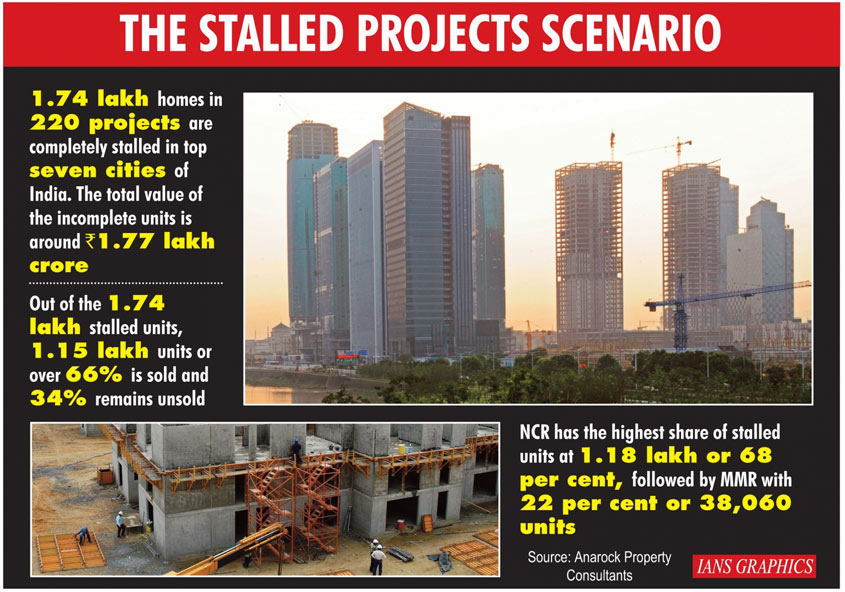New Delhi: As lakhs of houses in hundreds of projects remain incomplete across the country, markets players and experts suggest creation of a stress fund and special regulatory relaxations for the major stalled projects as measures to help the completion of these projects.
After its boom in early 21st century, the realty sector collapsed around 2012-13, which stopped funds from banks. The demonetisation drive in 2016 along with the implementation of the Real Estate (Regulation and Development) Act further shook the largely unorganized and cash-fed sector.
Sector experts are of the view that, although the Supreme Court has directed public sector major NBCC to complete projects of Amrapali Group, setting a precedent for other such cases, eventually a stress fund would be required to fund these projects.
"We think a stress fund may have to be put," Niranjan Hiranandani, the President of National Real Estate Development Council (NAREDCO) said recently, on being asked about the modality for financing the stalled projects. He, however, observed that the Supreme Court judgement on the Amrapali case lays down the broad guidelines in the matter.
Samantak Das of JLL India said: "There has to be some support from the government, because the government has some sort of a social mandate."
He, however, said that government may not go ahead with providing funds but could play a role in making the environment more conducive for building and completing the projects.
Nimish Gupta of Royal Institute of Chartered Surveyors (RICS) was of the opinion that the government can also relax some regulatory norms especially for these stalled projects.
"You can make this infected part (stalled projects) absolutely quarantine from rest of the projects and make it clear to the entire industry that this is a one-time surgical measure... One time policy relaxation for a limited period could be considered and I think a relaxation for one or two years would work," Gupta told IANS.
He said that the government could increase the floor area ratio (FAR) of the stalled projects, allowing the third party builder or the new acquirer of the project to monetize the increased area. The new builder could also be provided with an unutilised piece of land next to the concerned project which the developer could monetise and use it for funding the stalled project, he added.
Gupta further said that for these particular projects, banks could be made stakeholders and they could provide loans at lower or subsidised rates. He was of the view that government could play a major role by intervening and mediating the resolution process.
Financing these stalled projects seem to be a major problem as although the Supreme Court in its landmark verdict in the Amrapali case directed NBCC to take over the projects, but it seems unlikely that that the funds for the projects would be easily recovered.
On the outlook for the sector, Das said that with the tightening of regulations in the past few years, the market is moving towards more transparency which should ensure that such lags do not take place in the future.
"For the last three four years, the government has moved in the right direction, at least in prospective terms, if not retrospective," he said.


















